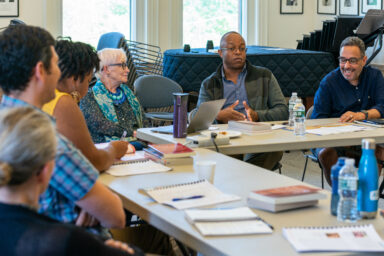A Series of Case Studies from Effective Leadership for Nonprofit Organizations
After many years of consulting, I came across a persistent problem in many organizations. Executive directors and boards often struggled to understand the dynamics of their relationships. Sometimes the board would steam roll the executive director, asserting the legal authority of trustees. In other cases, strong executive directors would side-step the board, making unilateral decisions with little or no consultation. This led to my writing of a book attempting to define the ideal relationship between boards and executive directors—I call it the “magic partnership” as outlined in the graphic below.
– Dr. Thomas Wolf
The following cases outline some of the dynamics of the magic, ideal relationship between boards and executive directors.
1. Dealing with Bad News and Crafting the Message
2. Oh No, Not Another Meeting!
3. So, You Want to be a Good Board President?
Dealing with Bad News and Crafting the Message
This case study provides a model for how an organization can deal with news that is potentially devastating. Once again, cooperation between executive director and board leadership is essential.
– Dr. Thomas Wolf
Dave had had a successful career as a fund-raiser when he was picked as executive director for a local United Way organization. His work was challenging—raising money generally is—but it was also rewarding, and the new job gave Dave the opportunity to talk with community leaders and contributors. For several years, Dave thrived and never experienced a problem that he couldn’t handle with his experience, competence, and winning personality.
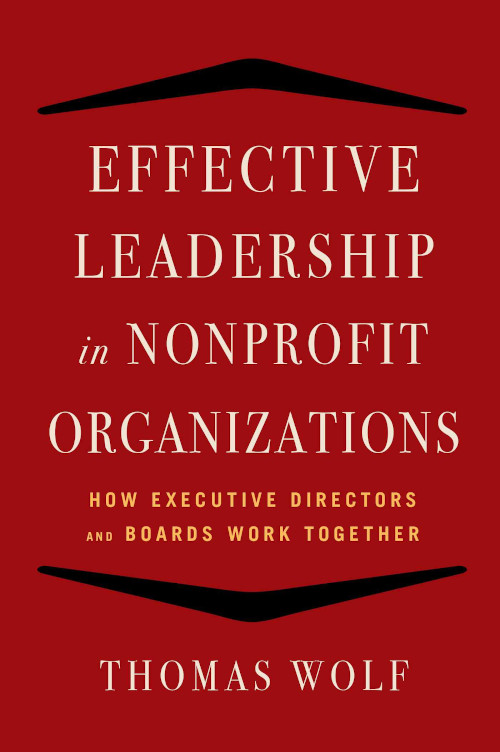
Then a major crisis almost derailed Dave’s career. Like others who worked for United Way at the time, he had to deal with news that had the potential to turn him into a pariah. “Imagine trying to look a donor in the face when your national CEO is going to prison for fraud,” he recalled. The William Aramony scandal may be in the far-distant past and largely forgotten, but for Dave, it seems like yesterday. “Having to answer angry accusations about charitable dollars being diverted to expensive vacations for Aramony and his mistress was not something I would want to have to go through again. But it taught me about how to deal with a crisis. And all I can say is: You had better have a committed and courageous board. When the bad news hit, our executive committee called an emergency meeting, and we came up with a plan of what to say, who would say it, and how to move on. Had the president of my board not stepped forward, I don’t think I could have handled it, and I might not have survived in my position. Yet, because of his credibility and steadfastness, we met the challenge and even achieved our fund-raising goals that year.”
Dave was fortunate his board president was a corporate CEO who knew from his day job that any major corporation has to have a plan for communicating with the public when things go awry. Good CEOs are trained to know what to do. They stay calm, have a spokesperson, and stick to a script. In Dave’s organization’s case, the script was simple: “We are an independent organization; while we are a local affiliate of a national organization, we are completely independent of any wrongdoing, and we are the same successful community resource that people have known and supported for decades.” Dave’s board president repeated the information over and over again. And soon Dave was authorized to take interviews and repeat it.
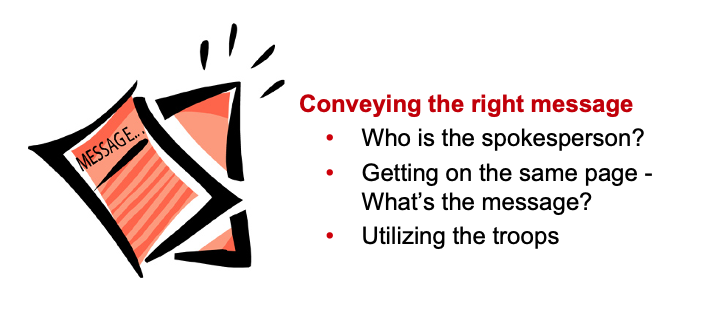
More recently, Dave was tested again. This time, the potential crisis was anticipated and dealt with before it even materialized. Dave had moved on and was now the executive director of another funding entity that distributed local donations to social service organizations. When Dave took over, he realized there were some problems with the distribution policies— who was getting the money that was raised and who wasn’t. It wasn’t that anything illegal or untoward was going on. But a few organizations were receiving the lion’s share of the money and were pretty much guaranteed support because of historical precedent; meanwhile, lots of newer ones could not gain access to the “club.” Dave and his board wanted to address this situation and take on new initiatives, even perhaps partnering with the grantees on special projects. But because so much of the money was going to these organizations with practically no strings attached, there was no way to direct the money to major community priorities. Many of Dave’s contributors were beginning to question their support.
Dave met quietly with his board. A small committee was formed to look into the matter and report back. While most agreed that the funding policies had to change, the greatest worry was the fallout that would occur when the grantees heard the bad news. “The last thing we wanted was public controversy as we were about to gear up our fund-raising campaign for the year, and there was definitely that possibility. While some of our donors were going to be pleased if we changed our funding policies, others associated with the major recipient organizations that would be losing money were fiercely partisan to the old system. Crafting the bad news message was going to be important. Delivering it effectively would be crucial.”
Once again, Dave was fortunate in his board. “We agreed from the outset that the news could not be leaked, and amazingly, even with a twenty-five-member board, it wasn’t. We also agreed that in fairness, we needed to let the grantees know first, but within minutes afterwards, we needed to be on the phone with some of their (and our) staunchest supporters. Patricia, our president, was going to be our chief spokesperson, and I was also going to be available to answer questions. But the entire board was primed with the message so trustees wouldn’t be caught flat-footed if confronted. When the news hit and the questions came, we were ready. We may have been overprepared. We were actually surprised that the fallout was so manageable.”
Oh No, Not Another Meeting!
This case study offers insights on how an executive director and board chair can plan and execute effective and productive meetings that will ensure that the necessary business of an organization is carried out while leaving everyone satisfied that their time was well spent.
– Dr. Thomas Wolf
Sally was a first-time executive director at a small nonprofit organization. She was relatively young, and due to her lack of experience, she felt she should be deferential to her board. When it came to board meetings, she attended only when invited and her only involvement in meeting planning was planning the refreshments. Meetings themselves were often excruciating, and she always obsessed about them for days in advance. She would receive the agendas and worry how the votes would go. Often in the meetings, discussion was extended and contentious, and sometimes an item would have to be tabled as trustees left the meeting early and there was no longer a quorum for a legal vote. After the meetings ended, the president would invite any trustees who remained to go out for dinner and leave the controversy behind. Sally was invited to these dinners but was often too upset to eat.
It was in her second job as executive director that Sally gained some perspective and knowledge. The board president was an older, experienced trustee and they consulted regularly. He told Sally she was always expected at board meetings unless the group went into executive session, which they rarely did. He believed in focusing the board on the things that, as he put it, were “under our purview” and leaving to staff those decisions that were more of an everyday nature. “Boards spend entirely too much time getting into the nitty-gritty. It is not their job. We have legal and fiduciary responsibilities, and we need to focus there first. Then we need to develop policy and think about the long-term future. We are not here to design programs.”
At first, Sally was concerned that if too much was left to the staff, there would be inadequate trustee involvement and buy-in and a lack of knowledge or commitment. This turned out not to be the case. Ed, the board president, believed that trustees should be deeply involved where they had an interest and were willing to spend time but that this should happen at the committee level and with guidance of staff. “Committees are where the real work will get done, and by having trustees involved, the board will feel reassured that the staff is not going off half-cocked. When something comes up for full board approval, it should often be at the recommendation of a committee, and the committee chair should, in most cases, make the motion.”
But trustee approval, it turned out, could happen at two levels. All committees shared their work with a coordinating body—the executive committee—that in turn was empowered in many cases to approve their work without it needing to come before the full board for a vote. When the executive committee felt a case to be sufficiently important, they would make a recommendation to place the item on the full board agenda. “By the time something gets to the full board,” Ed pointed out, “it will have gone through two reviews and have a group of trustees ready to fight for it, if necessary. But I would never put anything on the agenda for a decision that was going to be controversial anyway. I would always test the waters first. Board meetings are not the place for divisive discussions.”

As Sally and Ed continued their work together, she was amazed at how smoothly things went. Admittedly, the process was time-consuming. But board meetings were a breeze, and they always seemed to end when Ed’s agenda said they would. She asked him how he knew how long a board meeting should be. “Like my college professor used to say when people asked him how long the term paper should be,” he said, “long enough to cover the subject but not so long as to be boring. And frankly, any meeting longer than ninety minutes is boring by definition.”
In Sally’s earliest board meetings—the ones she dreaded—she noticed that a few people did most of the talking. That included her, since as executive director, she was the one who had most of the facts at her fingertips. Often she could sense that some people were bored. One of her trustees regularly drifted off to sleep. Ed’s meetings were magical by comparison. Everyone participated and he would often ignore someone’s raised hand in discussion in order to pick someone else who had been silent. Strangely, it did not seem to matter. The crucial information got shared.
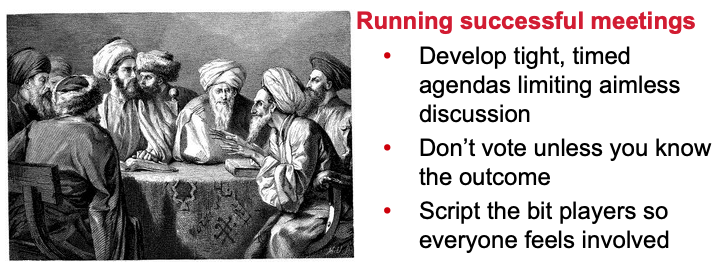
Ed explained it this way. “I think of every board member who is attending as someone who should be heard at some point in the meeting. I know what their areas of interest are, so I know when to call on them. If things will require a more extensive presentation, I call trustees in advance and prepare them for the fact that I will be relying on them at a certain point in the meeting. They tend to stay more alert throughout the meeting that way. Some are responsible for presenting an entire agenda item. Others give a progress report on something that relates to an item we are discussing. I always consider it a failure if there is someone who has not said anything. Remember, as executive director and board president, you and I look good to the extent we get what we want without having to plead for it. Our silence should reflect confidence in the process.”
So, You Want a Good Board President?
This case study offers insights on an executive director’s possible role in identifying and selecting Board leadership.
– Dr. Thomas Wolf
Tim had been executive director of a successful nonprofit organization for just over two years when the organization elected a new president, someone Tim did not know well but who was highly respected in the community. They agreed to meet once a week for the first few months of his tenure until they got better acquainted and had shared ideas about key issues and actions that needed to be taken up by the board.
It was during one of these early meetings that the new president asked Tim, “Who is going to be your next board president after me?”
“I have no idea,” Tim said. “You were just elected. Presumably the board has years to decide. Besides, in this organization, the vice president usually becomes president, so we are covered.”
“A bad idea,” he said. “Is he someone you want to be your next president?”
“No,” Tim confided. “He is not particularly strong as a leader, not much of a donor, and hates asking for money. But he has been a loyal volunteer and people like him and feel he should be rewarded.”
“Okay,” said the new president. “Let’s get started and find you a better one.”
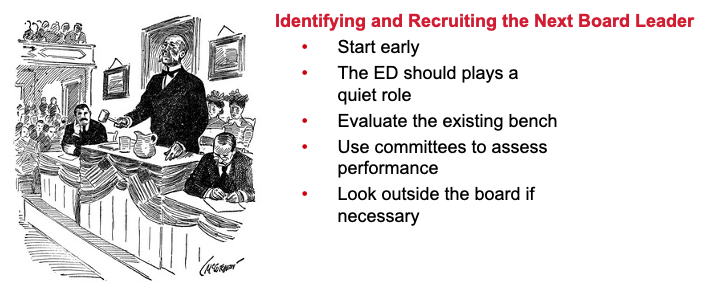
The two went over the board list. Tim confided that he didn’t see anyone among the officers or the other trustees who he felt was presidential material and who, just as importantly, would likely accept the position. “Exactly,” said the president. “Just what I figured. You confirmed my suspicions. That is why we are talking about it now. We have to go out and find a president. That will take time. We will need to bring that person on to the board, test him or her out on a committee or two, eventually get that individual onto the executive committee, and then into an officer position. That can take years. And what if that person doesn’t work out? We will need time to recruit someone else. You should ALWAYS be thinking about your next president and providing your candidate with the proper training to make sure that person succeeds and will be loyal to you in the process.”
During the next several years, Tim also learned that assessing trustee performance was one of his most important jobs, one that was not in his job description but something his president expected him to do. The president taught Tim the trick of using committee assignments as a testing group. “Jana has been complaining about how haphazard our trustee fundraising has been. She says we could raise a lot more money if we were better organized. I have put her on the development committee. Let’s see just how good she is at trustee asks.” As it happened, Jana was quite good and soon found herself an officer of the corporation.
–© Thomas Wolf from Effective Leadership for Nonprofit Organizations: How Executive Directors and Boards Work Together, Allworth Press, 2013. Buy the book.
We have more case studies on our website.
Part 1 focuses on evaluation, coaching, and balance of power.



